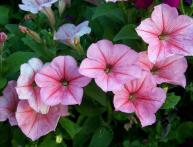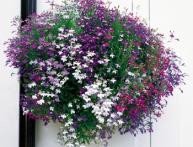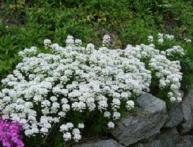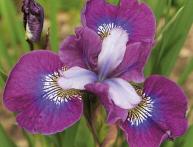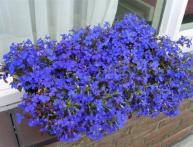Exotic flower in a pot Calathea makoya: description, planting and care
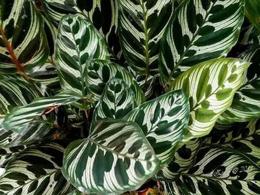
Indoor flowers have long become a symbol of the comfort and uniqueness of every human home. It is potted plants that give each home its individuality. Calathea macoya is no exception.
It is suitable for those lovers of indoor floriculture who are attracted not by lush and bright flowering, which does not happen so often, but by the everyday elegant appearance of the plant. Exactly beautiful leaves calathea makoya make this plant popular and in demand.
Content:
- Calathea makoya, plant description
- Conditions for growing calathea makoya
- Some features of calathea care
Calathea makoya, plant description
Calathea macoya belongs to the genus Calathea from the family Maranthaceae. Like all indoor plants, Calathea makoya came into the human home from the wild. The plant is native to the humid forests of South and Central America.
The life form of calathea is a perennial herbaceous plant. Since the generic name of the plant is translated from Greek as basket, it is believed that this plant was the raw material for weaving baskets for the indigenous people of Brazil, Peru, and Ecuador.
The underground part of the shoots forms fairly powerful and well-branched rhizomes. Straight ground shoots extending from them form rosettes of beautiful leaves. The leaf plates are thin, similar in appearance to paper. The leaves have an oval shape. Their size can reach up to 30 cm.
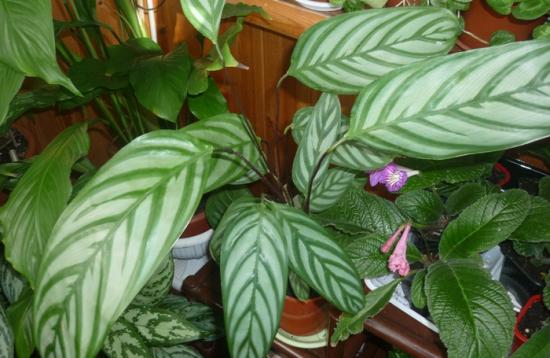
The leaves of Calathea makoya are very intricately colored. Against the background of green color there is a pattern of silver and dark green spots of different shapes and sizes. The lower part of the purple or cherry-colored leaf also has a pattern. The leaves are attached using pubescent purple petioles.
The petioles are quite long, their length can reach up to 14 cm. It is thanks to the color of the leaves and the pattern on them that the plant is popular among lovers of potted crops. In addition to the color of the leaves, the plant has another feature. With the onset of evening, the leaves rise, stretch and fold so that they look like the palms of a person offering prayer.
For this feature, the flower is called a prayer flower. In the morning the leaves return to their previous position. Because of this feature and ability to move, it seems that calathea is an animal rather than a plant. Although Calathea’s character is not very picky, it still needs to create certain conditions for growth and development indoors.
Conditions for growing calathea makoya
As for any plant, the following are important for calathea:
- lighting
- temperature
- humidity
- watering
- the soil
Lighting and temperature
In order for the calathea leaves to retain their pattern, the plant must be positioned so that it receives enough sun, but the lighting must be diffused. Direct rays burn the leaves, and a lack of light worsens the appearance of the leaves. Therefore, it is best to place the plant near windows oriented to the southeast or southwest.
Near the southern windows you need to create protection from the midday sun, and near the northern windows the flower needs additional light. A fluorescent lamp is suitable for this.
Considering that plants grow in the wild in a tropical climate, the room should be warm. The optimal temperature for calathea should be no lower than + 22 and no higher than + 28 degrees. The flower does not tolerate sudden changes in temperature. It is advisable to maintain the temperature at one, constant level. A sharp drop in temperature below the designated level is especially detrimental to the plant.
Watering and humidity
Considering that in the wild, calathea makoya grows along ponds and in damp places, the plant requires regular watering. In summer it should be frequent and plentiful, and in winter the flower should be watered more moderately but regularly. The soil in the pot should always be slightly moist, but without stagnation or excess water.
Except glaze, calathea requires a certain air humidity. This can be achieved by spraying water using a hand sprayer in the plant room. It is important to carry out this procedure in winter, when heating radiators dry out the air excessively. Excess or lack of water can cause leaves to dry out and drop.
Any light soil is suitable for growing calathea at home. It is best if it contains the following components in equal parts:
- sand
- peat
- leaf soil
- humus
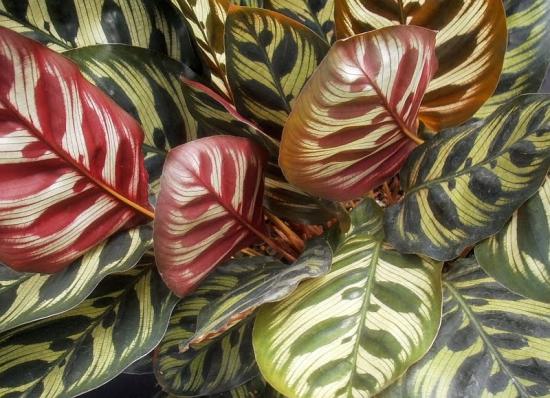
If you can create all the conditions indoors for growing a flower, then you can go to the store and buy calathea makoya.
Some features of calathea care
In addition to regular watering with soft, settled water, you can use bottom watering. To do this, fill the tray with pebbles or peat. After this, pour water into the tray and place a flower pot on top. Important for calathea and feeding.
After the plant is watered, you can dilute fertilizer for indoor plants and feed the flower. This should be done from spring to mid-autumn. The frequency of fertilization is once every two weeks. For propagation, you can separate part of the bush along with the rhizome during plant transplantation.
Typically, transplantation is carried out every two years. Calathea is susceptible to spider mites and scale insects. For prevention, you need to regularly inspect the entire plant, paying special attention to the underside of the leaves.
If a pest infestation is noticed on time, then it is enough to treat with a solution of karbofos or actellik. If everything is done correctly, then Calathea makoya will look decent and, if you’re lucky, you can hear the slight rustling of its leaves, which are like the palms of hands folding for evening prayer.
Video about proper care of Calathea makoya at home:




